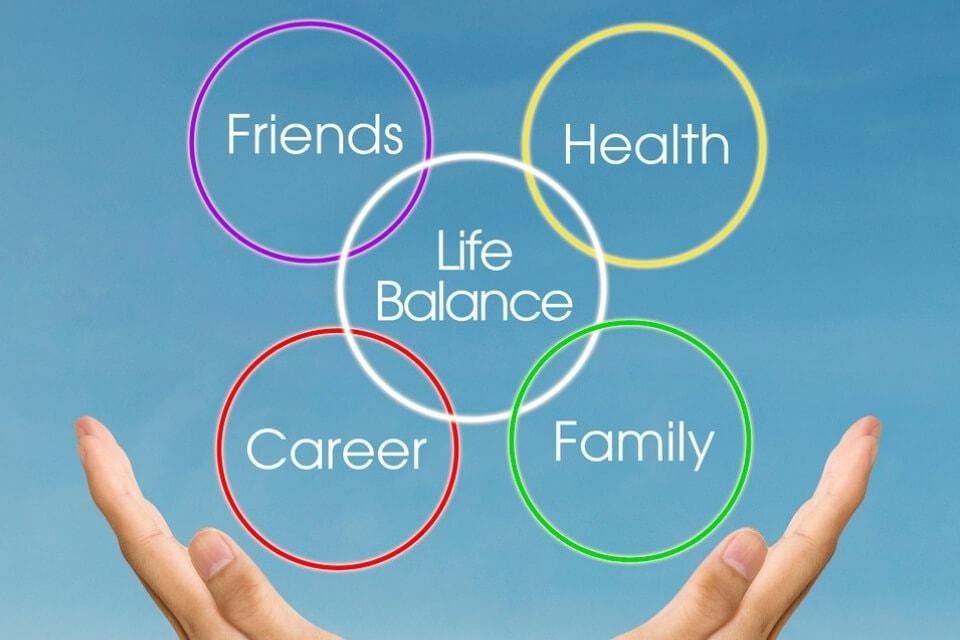

Work-life balance is a crucial aspect of modern life, impacting our overall well-being and success. Let’s learn more about this topic below with Pacman as we explore strategies for creating harmony between work and personal life.
Work-life balance is the equilibrium between one’s professional responsibilities and personal life. It’s about finding a harmonious integration of work, family, leisure, and personal growth. In today’s fast-paced world, achieving this balance can be challenging, but it’s essential for maintaining good mental and physical health, as well as overall life satisfaction. The concept of work-life balance has gained significant attention in recent years, especially as technology has blurred the lines between work and personal time. Just as Pacman navigates through a maze, balancing the pursuit of pellets with avoiding ghosts, we too must navigate the complexities of modern life, balancing our professional ambitions with our personal needs and desires.
The importance of work-life balance cannot be overstated. When we achieve a good balance, we tend to be more productive at work, more present in our personal relationships, and more satisfied with life in general. It reduces stress, prevents burnout, and contributes to better physical and mental health. However, finding this balance is not a one-size-fits-all solution. It varies from person to person, depending on individual circumstances, career demands, personal responsibilities, and life goals. Like Pacman adapting to different game levels, we must adapt our approach to work-life balance as our life circumstances change.
Before we can improve our work-life balance, it’s crucial to recognize when it’s out of alignment. There are several signs that indicate a poor work-life balance, and being aware of these can help us take corrective action. One common sign is feeling constantly overwhelmed or stressed. If you find yourself unable to relax even during your free time, constantly thinking about work, or feeling anxious about pending tasks, it may be a sign that your work is encroaching too much on your personal life. Another indicator is neglecting personal relationships or hobbies. If you’re consistently canceling plans with friends or family, or have given up activities you once enjoyed due to work commitments, your work-life balance may need adjustment.
Physical symptoms can also be a red flag. Chronic fatigue, insomnia, frequent headaches, or digestive issues can all be signs of stress related to poor work-life balance. Additionally, if you find yourself unable to fully engage in either work or personal activities due to preoccupation with the other, it’s a clear sign that your balance is off. Just as Pacman loses a life when caught by ghosts, we too can lose our vitality and joy when caught in the trap of poor work-life balance. It’s important to pay attention to these signs and take action before they lead to more serious consequences like burnout or health problems.
Technology has dramatically changed the way we work and live, offering both opportunities and challenges for work-life balance. On one hand, it has enabled greater flexibility, allowing many people to work remotely or have more control over their schedules. On the other hand, it has also created an expectation of constant connectivity, making it difficult to truly disconnect from work. The ubiquity of smartphones and laptops means that work can follow us anywhere, anytime. This can lead to a feeling of always being “on,” making it challenging to relax and recharge. Like Pacman constantly pursued by ghosts, we may feel constantly pursued by work responsibilities, even during our personal time.
To maintain a healthy work-life balance in the digital age, it’s crucial to set boundaries around technology use. This might involve setting specific times to check work emails, turning off notifications outside of work hours, or designating tech-free zones or times in your home. It’s also important to be mindful of how we use technology in our personal time. While social media and digital entertainment can be enjoyable, excessive use can eat into time that could be spent on more fulfilling personal activities or face-to-face interactions. By being intentional about our technology use, we can harness its benefits while minimizing its potential to disrupt our work-life balance.
Improving work-life balance requires conscious effort and often, some lifestyle changes. One fundamental strategy is to set clear boundaries between work and personal life. This might involve establishing a dedicated workspace if you work from home, or setting strict limits on when you’ll check work emails or take work-related calls outside of office hours. It’s also important to learn to say no to non-essential commitments that might overburden your schedule. Like Pacman choosing which paths to take in the maze, we must be selective about what we take on, both at work and in our personal lives.
Time management is another crucial aspect of maintaining work-life balance. This involves prioritizing tasks, both at work and in your personal life, and allocating your time and energy accordingly. Techniques like the Eisenhower Matrix can help you distinguish between urgent and important tasks, allowing you to focus on what truly matters. It’s also beneficial to schedule personal activities and leisure time with the same level of commitment as you would work appointments. This ensures that your personal life doesn’t get sidelined by work demands.
Self-care is an essential component of work-life balance. This includes maintaining a healthy diet, getting regular exercise, and ensuring adequate sleep. It also involves making time for activities that bring you joy and relaxation, whether that’s reading, gardening, playing sports, or spending time with loved ones. Regular breaks throughout the workday can also help maintain balance and prevent burnout. Just as Pacman needs power pellets to energize him, we need these moments of self-care to recharge and maintain our vitality.
Mindfulness practices can be powerful tools in achieving and maintaining work-life balance. Mindfulness involves being fully present in the moment, aware of your thoughts and feelings without judgment. By practicing mindfulness, we can become more aware of when we’re feeling stressed or overwhelmed, allowing us to take corrective action before these feelings escalate. Mindfulness can also help us transition more smoothly between work and personal time, allowing us to be fully present in each domain rather than carrying the stress or preoccupations of one into the other.
There are many ways to incorporate mindfulness into daily life. Meditation is a popular method, but even simple practices like taking a few deep breaths before starting a task, or paying full attention to the sensations of eating during lunch, can be forms of mindfulness. Some people find it helpful to practice mindful transitions between work and personal time, perhaps by taking a short walk or doing a brief meditation. Like Pacman pausing between levels, these mindful transitions give us a moment to reset and refocus. Regular mindfulness practice can lead to reduced stress, improved focus, and a greater sense of overall well-being, all of which contribute to better work-life balance.
Despite our best efforts, there are often challenges that can disrupt our work-life balance. One common challenge is the culture of overwork that exists in many workplaces. This can create pressure to work long hours or always be available, making it difficult to maintain boundaries. To overcome this, it’s important to communicate clearly with your employer about your needs and boundaries. Many companies are recognizing the importance of work-life balance and may be open to flexible arrangements. If your workplace culture is consistently undermining your efforts at balance, it may be worth considering whether it’s the right fit for your long-term well-being.
Another challenge can be the demands of caregiving, whether for children, elderly parents, or other family members. These responsibilities can be time-consuming and emotionally demanding, making it difficult to balance with work commitments. In these situations, it’s crucial to seek support. This might involve sharing responsibilities with other family members, hiring help if financially feasible, or looking into support services in your community. It’s also important to communicate with your employer about your situation, as many workplaces offer support or flexibility for employees with caregiving responsibilities.
Financial pressures can also pose a challenge to work-life balance, particularly if they necessitate working long hours or taking on additional jobs. While there’s no easy solution to financial stress, it’s important to consider the long-term costs of overwork on your health and relationships. Looking for ways to increase your earning potential through skill development or career advancement might be more sustainable than consistently overworking. Additionally, reviewing your budget and financial goals with a professional could help you find ways to reduce financial stress without sacrificing your work-life balance.